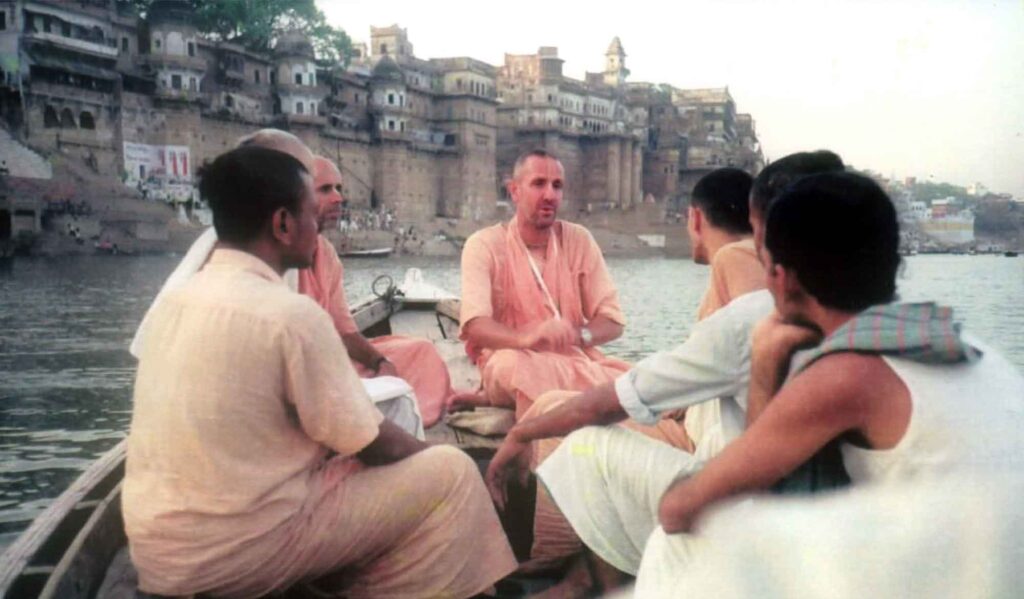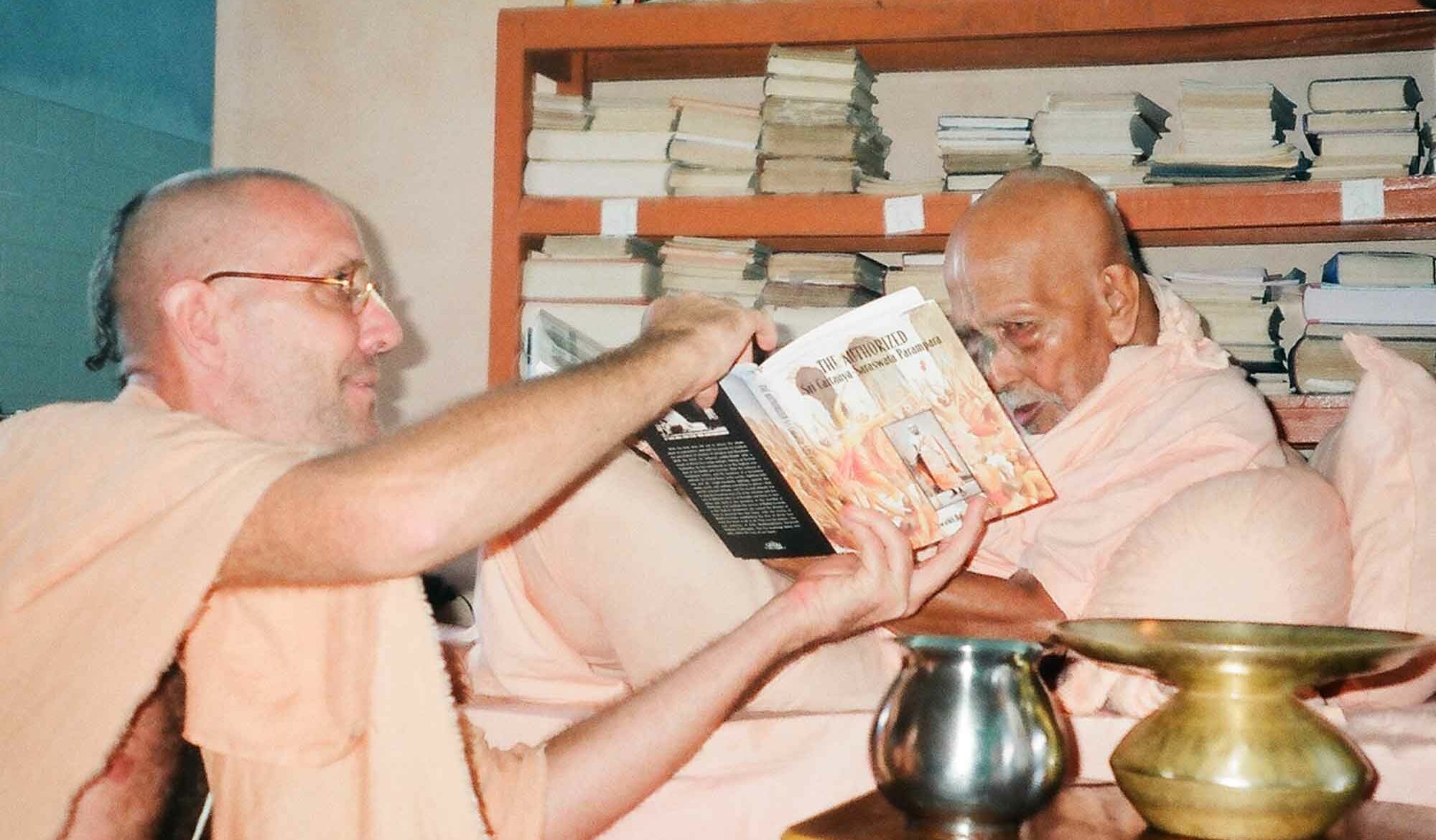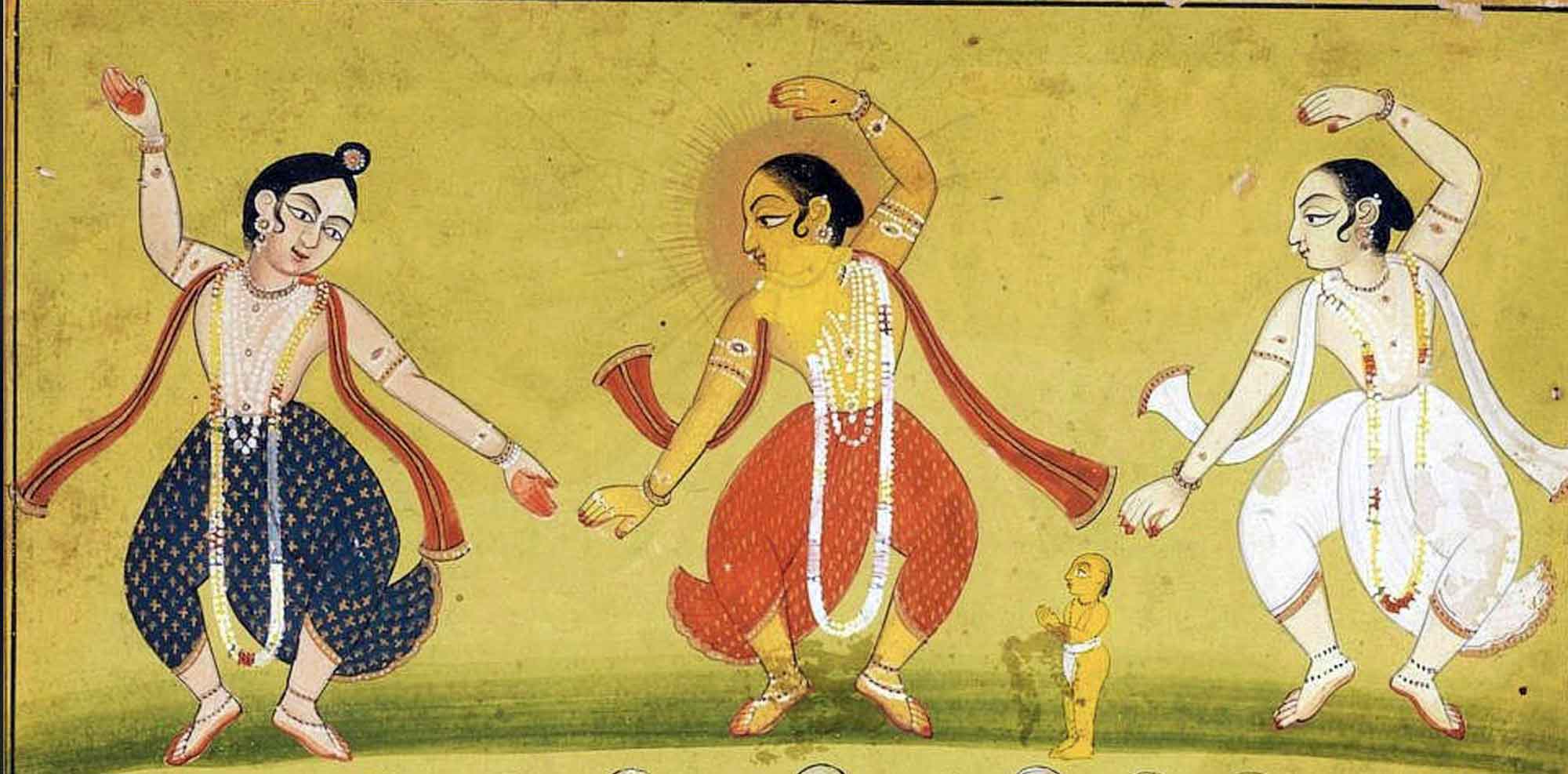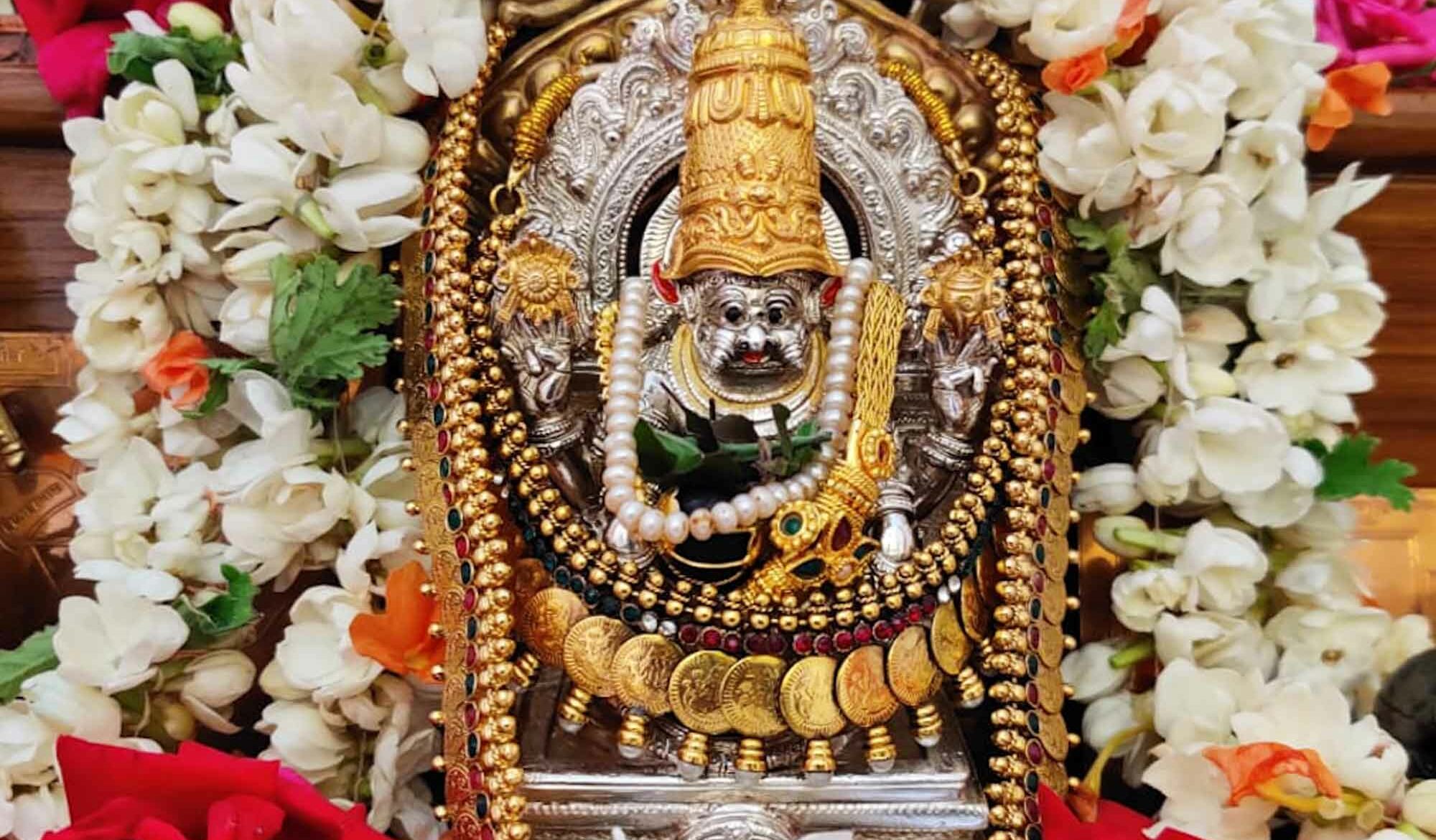by Swami B.G. Narasingha
“Bābājī Sannyāsa” written by Śrīla Narasiṅgha Mahārāja in 2002, is in response to questions concerning the awarding of bābājī-veśa in the line of Śrīla Bhaktisiddhānta Sarasvatī Ṭhākura and A.C. Bhaktivedānta Svāmī Prabhupāda.
Devotee: On this past Rādhāṣṭamī you gave bābājī sannyāsa (initiation) to a disciple of one of your godbrothers (Śrīla Turīya Dāsa Prabhu Mahāśaya). But as per my understanding the bābājī sannyāsa is not authorized in the disciplic succession of your Guru Mahārāja (A.C. Bhaktivedānta Svāmī Prabhupāda). So why have you done something so unprecedented as this?
Swami Narasiṅgha: Actually the precedence is there. My Guru Mahārāja gave bābājī-veśa (bābājī-sannyāsa) to two of his disciples (each on separate occasions). Normally Śrīla Prabhupāda gave tridaṇḍi-sannyāsa to his disciples for the purpose of preaching work, but on two occasions he gave bābājī-sannyāsa. This was also the standard of Śrīla Bhaktisiddhānta Sarasvatī Ṭhākura. Generally, tridaṇḍi-sannyāsa was given to the majority of disciples who were fit for renunciation and for preaching work. In a few cases the bābājī-sannyāsa was given. Sarasvatī Ṭhākura told that bābājī-veśa is the dress of the paramahaṁsas, the top-most class of Vaiṣṇavas. He told that it is better to take the dress of a tridaṇḍi-sannyāsī and serve the higher Vaiṣṇavas, rather than to imitate the dress of the higher Vaiṣṇavas and thus become a hypocrite. But on occasion he did award bābājī-veśa.
Our Guru Mahārāja gave bābājī-sannyāsa to his disciples only under special circumstances. It so happened that these disciples of our Guru Mahārāja thought that they would die and leave the world very soon due to some incurable disease. So they were given bābājī-sannyāsa and instructed to absorb themselves in chanting of the Holy Name of Kṛṣṇa.
Devotee: But those devotees were given bābājī-sannyāsa under very special circumstances. Those devotees thought that they would die soon!
Swami Narasiṅgha: Yes, they were young men and they thought that they might die soon. But when you pass fifty years of age you should no longer think that you ‘might die soon’, you should know it for a fact! After fifty, death is certain! And at that stage of life every man should prepare himself for the next life by taking sannyāsa – pañcaśordhvam vanaṁ vrajet. After fifty years of age (pañcaśordhvam) one should go to the forest (vanaṁ). This must be done. It is obligatory (vrajet). This is the injunction of the śāstra. Either tridaṇḍi-sannyāsa or bābājī–sannyāsa, the difference is very small but in any case one must get out of the family attachment after fifty years of age.
My Guru Mahārāja had the following to say about the matter:
“Ultimate goal of life is to understand the Supreme Personality of Godhead. Because in your busy life, you have very little time; therefore, after gṛhastha life, fifty years, up to, not more than that, pañcaśordhvam vanaṁ vrajet, then you must retire. It doesn’t matter whether you have finished your duty or not. It doesn’t matter. You must retire. And then, after being trained for some time, being retired from the family life, living secluded life-not exactly secluded, but detached from family life-let the elderly sons, daughters, they can take care of the family, and the husband, wife, they travel in different places of pilgrimage. Again they come for some time, but without any attachment, as guest in the house of his son. In this way, when he is trained up, then he says to the wife, “Now you live with your sons. They will take care of you. I am taking sannyāsa.”
“So everyone has to take sannyāsa. It is not that a particular man, simply Caitanya Mahāprabhu has to take sannyāsa. No. That is obligation. You must. In Buddha philosophy, everyone has to take sannyāsa and live as a sannyāsī for some years. That is their duty. So Mahārāja Yudhiṣṭhira prepared himself for becoming sannyāsī. Sannyāsī means renounced. No more family responsibility or any responsibility. Simply to become pure devotee of the Lord, that is sannyāsa.”
“Pañcaśordhvam vanaṁ vrajet. You show your all nonsense ability up to fifty years. Don’t go more than that. Because you are rascal, you will never be able to do anything, but jump like monkey up to fifty years, not more than that. Monkey jumping may be continued up to fifty years. Then retire. They will continue monkey jumping up to the last point of death.”
There are two types renunciation in Gauḍīya Vaiṣṇavism; goṣṭhyānandī and bhajanānandī. Both these classes are ‘ānandī’ that is they take pleasure in seeking the perfection of life. The goṣṭhyānandī class (the tridaṇḍi-sannyāsīs) takes to the path of preaching kṛṣṇa-nama to achieve perfection while the bhajanānandī class takes to the path of absorbing themselves in the chanting of kṛṣṇa-nama. Some are suited for one path while others are suited for the other. In the end both these classes of devotees arrive at the same destination, kṛṣṇa-prema.
The tridaṇḍi-sannyāsīs are in the public eye and they are expected to lead the assembly of devotees in all manners of devotional service. Especially they are to defend the dignity of the devotional school by defeating all opposing philosophical opinions. For this the tridaṇḍi–sannyāsī accepts some pratiṣṭhā or position in the service of the Supreme Lord. The bābājīs however avoid all types of position and simply instruct others by their example of being absorbed in humble service and kṛṣṇa-nāma.
In many ways the tridaṇḍi-sannyāsī and the bābājī-sannyāsī share the same dharma. Both are to live their life free from the association of women, both are to eat, sleep, and dress simply, both are to chant kṛṣṇa-nāma, both study the Vaiṣṇava śāstra, and most importantly both are to serve the lotus feet of guru and Kṛṣṇa. This is the way to cross over the ocean of material existence.
etāṁ sa āsthāya parātma-niṣṭhām
adhyāsitāṁ pūrvatamair mahadbhiḥ
ahaṁ tariṣyāmi duranta-pāraṁ
tamo mukundāṅghri-niṣevayaiva
“I shall cross over the ocean of material existence, which is extremely difficult to cross by becoming fixed in serving the lotus feet of Mukunda and by taking complete shelter of Him. This is approved by the previous great saints and sages who were fixed in devotion to the Supreme Lord.” (Bhāg.11.23.57)
A man should take sannyāsa with only one intention and that is to dedicate his full energy to serve guru and Kṛṣṇa. At the time of taking sannyāsa both the tridaṇḍi-sannyāsī and the bābājī–sannyāsī receive the same mantra, gopī-bhāva mantra. This mantra is sometimes called the rāga-mārga mantra and this gives one entrance into the service of Śrī Śrī Rādhā-Kṛṣṇa in the mood of the residents of Vraja. In this way there is practically no difference between the tridaṇḍi-sannyāsī and the bābājī-sannyāsī.
Another consideration as to what path of renunciation one will take may largely depend upon one’s nature and capability. Those who have got more energy, who are comfortable with being in the forefront of an assembly etc. may find that they are more suited for tridaṇḍi-sannyāsa, while those with a less assertive nature, who do not feel confident leading the Vaiṣṇava assembly may find that they are more suited for bābājī-sannyāsa. In any case, after the age of fifty a man must seriously make plans to accept the renounced order of life.
Devotee: Since the time of Śrīla Bhaktisiddhānta is there any other precedence for bābājī–sannyāsa in our paramparā?
Swami Narasiṅgha: Yes. As we know it Śrīla Bhakti Prajñāna Keśava Mahārāja initiated some twenty or so bābājī-sannyāsīs and to my knowledge Śrīla Bhakti Pramoda Purī Gosvāmī Mahārāja initiated many more bābājī-sannyāsīs than that. I think also that in other branches of the Gauḍīya Matha you will find that bābājī-sannyāsa is also there.
So either you accept tridaṇḍi-sannyāsa or you accept bābājī-sannyāsa but the point is that every man after the age of fifty must prepare for the next life by accepting sannyāsa. That is compulsory.
More Articles by Swami B.G. Narasingha
The Secret of Prema – Rasika or Sahajiyā?
‘The Secret of Prema – Rasika or Sahajiyā?’ was written by Swami Narasingha in 1996 for Gauḍīya Vedānta magazine. In this article, Narasingha Maharaja discusses the topic of rāgānuga-bhakti and how such a method should not be taken cheaply.
Śrī Caitanya: Fulfilment of a Transcendental Dialectic
‘Śrī Caitanya: Fulfilment of a Transcendental Dialectic’ was written by Swami B.G. Narasingha and first published in Clarion Call magazine, Vol.2 issue 4 in 1989. This article gives a short biography and explanation of the life and teachings of Śrī Caitanya Mahāprabhu. This essay was later published in Swami Narasingha’s book ‘Evolution of Theism’.
The Worship of Lord Narasiṁha
‘The Worship of Lord Narasiṁha’ was written by Swami B.G. Narasingha on May 1st 2004. In this article Narasingha Maharaja explains the reason why Gauḍīya Vaiṣṇavas, who generally worship Mahāprabhu and Rādhā-Kṛṣṇa, worship Kṛṣṇa in the fierce form of Narasiṁha.












